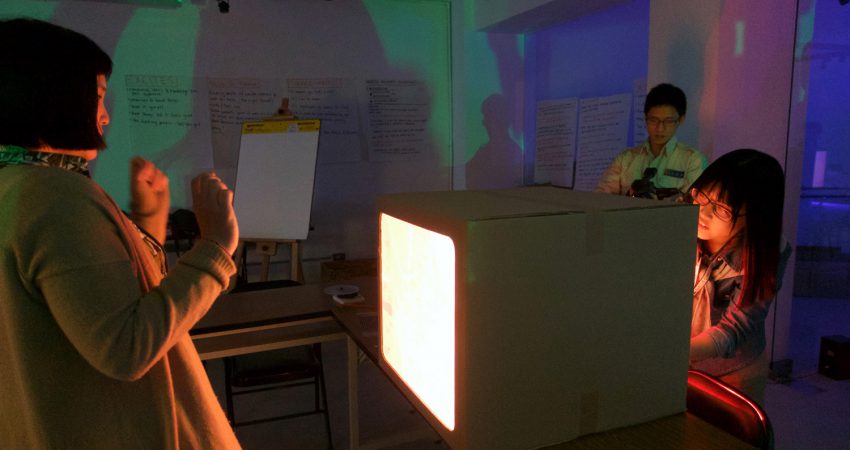
By Molly Shea - June 2015
PAPER CITATION
Blikstein, P. (2013). Digital fabrication and “making” in education: The democratization of invention. In J. Walter-Herrmann & C. Büching (Eds.), FabLabs: Of machines, makers and inventors (pp. 1–21). Bielefeld, Germany: Transcript Publishers.
The field of informal science education has embraced “making” and design activities as a powerful approach to engaging learners, but questions remain about how such programs support deep STEM learning. This paper provides theoretical background and concrete cases that illuminate program design and implementation issues related to making.
Research Design
Blikstein breaks up the chapter into four parts:
- An historical account of engineering education that distinguishes scientific investigations from engineering and design studies
- A review of critical pedagogy and constructionist theories of learning, which suggests that making spaces have the potential to support student agency
- Case studies of student learning and teacher practice in design projects
- A discussion of the affordances and constraints of learning through making projects and the corresponding pedagogies
Research Findings
Blikstein discusses the rise and fall of technical training in science and engineering education and connects these historical trends with learning theories. He draws important distinctions between the practices of scientists and those of engineers. Scientists look to discover unifying principles of natural phenomena, whereas engineers explore multiple solutions by “creating tools and altering their environment” to address the identified challenges. Making and tinkering activities give teachers and students opportunities to engage in both kinds of activities as they learn, question, and build in fabrication labs.
Blikstein posits that the reemergence of interest in design and making promises to create more “culturally meaningful curriculum”: Teachers can place science concepts in the context of students’ everyday interests. Citing Freire (1974), he argues that meaningful curriculum should be derived from local cultural practices and that students should be engaged in constructing knowledge rather than simply consuming it. Through tinkering, students engage in hands-on experiences that allow them to question, design, collaborate, and construct knowledge as they go.
Blikstein provides examples of opportunities and challenges for teachers as they help students use technical tools to undertake design projects. Specifically, he finds that learning by tinkering can often lead students to unexpected discoveries as they collaborate. For example, one student team set out to build a roller coaster in a backyard. As they worked, they refined and redesigned their project several times. They learned about the scientific concept of friction and about design elements that ultimately changed their product. At the end of their project, they created a smaller version of a roller coaster that stood on a table.
Tinkering and making projects like this one—supported by teachers who are willing to learn alongside students and by spaces where tools and materials are accessible—can promote deep engagement with student-driven questions, collaboration among students and between students and teachers, and multiple cycles of design and discovery. There were also challenges related to creating robust learning environments. Blikstein notes that building a space in which students can design and tinker does not guarantee that students will go deep, experiment and repeat, or create complex projects. For example, design activities can be set up in step-by-step processes that limit student learning and inquiry. They can also involve creating simple projects without also creating imaginative and culturally meaningful contexts in which to learn science. Making projects require that students and teachers have time to ask questions, move projects through multiple rounds, critically think about the projects, and collaborate with others.
Theoretical Basis
Blikstein uses constructionist theories of learning to explore how the process of physically constructing an object is both a context for learning and an expression of learning. Constructionist theories of learning support student-driven problem-solving with materials and guidance from educators. The other theories in the article address the importance of student agency. These discussions are based on the theories and writings of John Dewey, Seymour Papert (1991), and Paulo Freire (1974).
Implications for Practice
Blickstein’s examples suggest that making activities need to be designed to augment students’ existing practices and competencies. Making can be more powerful when the projects are locally relevant and culturally meaningful. Additionally, to support differences in the ways in which students approach their learning, educators can:
- Create open-ended activities
- Allow students to work together and learn from each other
- Provide time for students to slow down and notice or speed up and build
Blikstein’s paper suggests educators should focus less on completing a large number of projects and more on attending to iterative design and testing processes that allow students and teachers to think together, troubleshoot design challenges, and add complexity to initial designs.
References
Freire, P. (1974). Pedagogy of the oppressed. New York, NY: Seabury Press.
Papert, S. (1991). Situating constructionism. In S. Papert & I. Harel (Eds.), Constructionism. Cambridge, MA: MIT Press.
Resnick, M., Berg, R., & Eisenberg, M. (2000). Beyond black boxes: Bringing transparency and aesthetics back to scientific investigation. Journal of the Learning Sciences, 9(1), 7–30.




